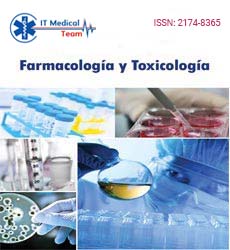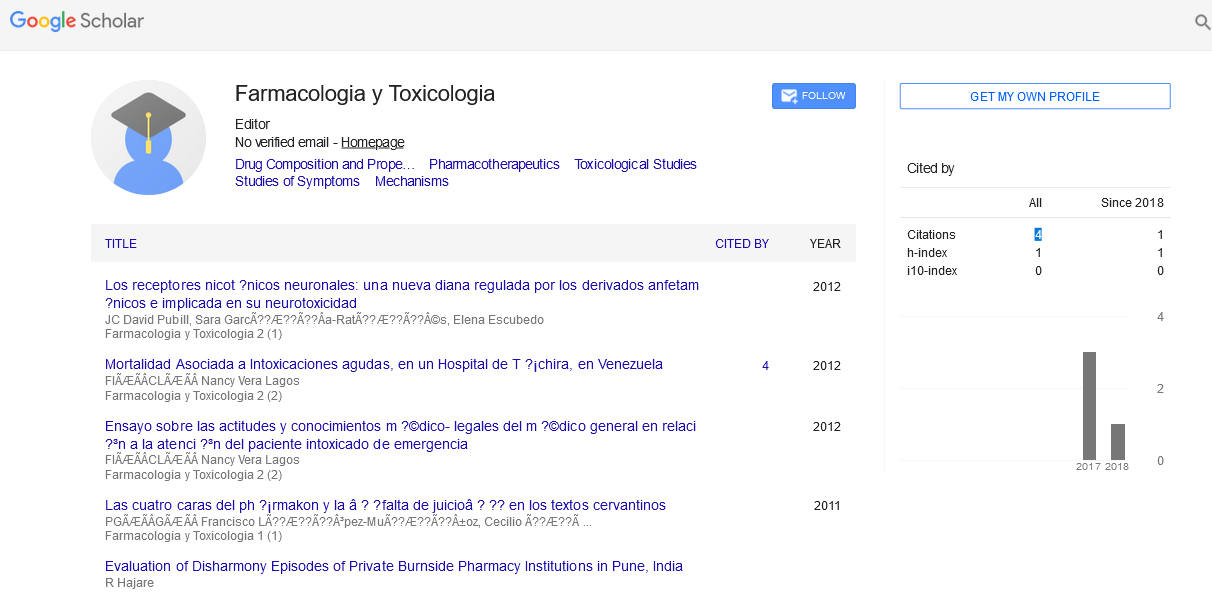Case Report - (2023) Volume 13, Issue 1
Anti - proliferative medication pharmacodynamics: practical considerations for enhancing quality of care
Bahare Salehi*
Division of Systems Biomedicine and Pharmacology, Leiden University, Iran
*Correspondence:
Bahare Salehi, Division of Systems Biomedicine and Pharmacology, Leiden University,
Iran,
Email:
Received: 02-Feb-2023, Manuscript No. ipft-23-13474;;
Editor assigned: 04-Feb-2023, Pre QC No. PQ- ipft-23-13474;
Reviewed: 18-Feb-2023, QC No. ipft-23-13474;
Revised: 25-Feb-2023, Manuscript No. ipft-23-13474 (R);
Published:
28-Feb-2023, DOI: 10.36648/2174-8365-13.1-154
Abstract
Given the high mortality rate of invasive fungal infections (IFIs), it appears essential for therapeutic efficacy and safety to receive the proper antifungal exposure. Materials and procedures: In this study, the pharmacokinetic data on systemically administered antifungals with an emphasis on target-site penetration, comorbidities, and combination antifungal therapy are summarised. Discussion and conclusions: Through the urine and faeces, amphotericin B is removed unaltered. Both flucytosine and fluconazole have a low affinity for proteins and are excreted by the kidney. The liver is where itraconazole, voriconazole, posaconazole, and isavuconazole are metabolised. Azoles are implicated in a variety of drug-drug interactions because they are substrates and inhibitors of the cytochrome P450 (CYP) isoenzymes. In the plasma, anidulafungin degrades on its own. CYP is not involved in the enzymatic metabolism of capsofungin or micafungin in the liver. Despite the fact that various drug-drug interactions take place Echinocandins exhibit a lesser likelihood for drug-drug interactions when used in the caspofungin and micafungin treatments. The majority of pertinent tissues can be reached by flucytosine and azoles. Amphotericin B builds up in the spleen and liver. Its concentrations in the brain and myocardium are moderate, whereas those in the kidney and lung are low. Echinocandins have a comparable tissue distribution as amphotericin. For other IFIs such invasive aspergillosis and mucormycosis, such as cryptococcosis, combination antifungal therapy is debatable but has been proven effective for cryptococcosis
Keywords
Polyenes, Amphotericin B lipid formulations, Liposomal amphotericin
B, Itraconazole, Voriconazole, Echinocandins, Caspofungin, Critically ill, Renal
replacement therapy, Extracorporeal membrane oxygenation.
INTRODUCTION
IFIs, or invasive fungal infections, are known to have significant
morbidity and fatality rates. Life-threatening IFIs are primarily caused by Candida species, Cryptococci, Aspergilli, Mucorales,
and other fungus in immunocompromised patients. Critically
sick individuals are at risk for developing candidaemia and
other invasive candidiasis symptoms, especially if they are receiving wide spectrum antibiotic therapy, renal replacement
therapy, total parenteral nutrition, corticosteroids, or other
immunosuppressive medications. A classic opportunistic
infection of immunodeficiency brought on by HIV infection is
cryptococcosis. Additionally, systemic therapy will be needed
for a number of endemic fungal diseases [1-2]. Patients with
haematological malignancies, particularly those with acute
myelogenous leukaemia, and those who have received a
haematopoietic stem cell transplant are the main populations
affected by invasive aspergillosis. Recipients of solid organ
transplants are another vulnerable group. critically unwell
patients with advanced chronic obstructive pulmonary disease
or significant liver cirrhosis illness also have a higher chance of
developing invasive aspergillosis. Immunosuppression, diabetes,
blood transfusions, and chelator medication are common risk
factors for mucormycosis [3-4]. For IFIs to be successful, prompt,
strong antifungal treatment is essential. In many instances,
empirical or preventative antifungal medication is advised due to
the challenging and frequently delayed nature of the diagnosis.
Antifungal prophylaxis is necessary for patients who are most
at risk for IFI, such as those who have prolonged neutropenia
following induction chemotherapy for acute myelogenous
leukaemia or myelodysplastic syndrome or those who are
receiving aggressive immunosuppression for graft versus host
disease following haematopoietic stem cell transplantation.
There are detailed management standards for the IFIs that are
most common.
The pathogen must be exposed to the appropriate antifungal
agent at the right time and in an amount that is high enough
to be effective [5]. However, the majority of patients with IFIs
have serious underlying illnesses and a variety of co-morbidities,
increasing their susceptibility to negative medication reactions.
Additionally, co-morbidities may impact how antifungals
and other crucial medications are absorbed, distributed,
metabolised, and eliminated. Subtherapeutic exposure to azoles
or flucytosine may occur from gastro-intestinal dysfunction,
such as that brought on by anticancer chemotherapy or poor
gastro-intestinal perfusion. Impaired hepatic and renal function
may affect metabolism and elimination. Drug distribution in
critical illness may be impacted by common pathophysiological
alterations as altered hydration and hemodynamics, tissue
perfusion, and plasma protein levels. Antifungals frequently
cause pharmacodynamic and pharmacokinetic medication
interactions. Antifungals are categorised as either fungicidal
(echinocandins on Aspergilli) or fungistatic (azoles, 5-flucytosine,
etc.) based on their pharmacodynamic effects (amphotericin B,
echinocandins on Candida [6] . The area under the concentrationtime
curve (AUC) to the minimal inhibitory concentration (MIC) of
the causing fungal pathogen (AUC/MIC) ratio is the one that most
closely relates to antifungal efficacy for azoles, 5-flucytosine, and
echinocandins. A relevant post-antifungal effect is demonstrated
by the concentration-dependent antifungal drug amphotericin B.
The pertinent pharmacokinetic/pharmacodynamic parameter,
thus, is the ratio of its peak concentration (C max) to the fungus's
MIC (C max/MIC) . Animal models are used to determine the
parameters' target values. The probability of target attainment (PTA) for different antifungals under diverse clinical settings was
evaluated using pharmacokinetic/pharmacodynamic modelling
and Monte Carlo simulations [7].
Target-site kinetics of antifungals constitute a major problem in
the management of IFIs that are localised outside the circulation.
The majority of the data up to this point have come from tissue
homogenates collected from animal research. Tissue biopsies,
samples taken during surgery or autopsies, and bodily fluids
including cerebrospinal fluid (CSF), peritoneal fluid, or pleural
effusion all yield only scant information. A common way to
measure drug target-site penetration is to compare the tissue
(target-site) concentration to the concurrent plasma level.
However, hysteresis, or the discrepancy between the targetsite
and plasma concentration-time profiles, might cause single
measurements to yield inaccurate drug penetration estimates.
More representative data can be obtained by contrasting the
area under the concentration-time curves (AUC) at the target site
and in the plasma. obtained. Naturally, this method necessitates
the simultaneous monitoring of plasma concentrations at several
target sites [8]. Target-site concentrations have also been used
in pharmacokinetic/pharmacodynamic modelling. simulations.
The combination antifungal therapy (CAF), when considering the
pharmacokinetic/pharmacodynamic properties and modes of
action of antifungal drugs, displays distinct drug-drug interactions
(synergism, additivity, indifference, and antagonism), as well as
varying efficiency in various tissues. The mechanisms underlying
these effects are explained by a number of models. CAF has been
researched in numerous organised clinical investigations. On CAF,
there are case reports for uncommon conditions. Several CAF
signals at the time are supported by the recommendations at hand.
This review's goal is to provide an overview of the pharmacokinetics
of the antifungals currently being utilised to treat IFIs. We
emphasise [9] . We concentrate on unique clinical situations,
such as critical illness, renal and hepatic impairment, the effects
on antifungal selection and dosage, and the contentious topic of
CAF. Numerous studies demonstrate that CAF treatment may be
effective in treating some patient populations, despite conflicting
claims. Treatment of cryptococcal illness with CAF treatment,
based on amphotericin B plus flucytosine, was effective, especially
in individuals with HIV infection. When treating haematological
patients with invasive aspergillosis, typically those with a positive
galactomannan test, voriconazole combined with anidulafungin
was effective, as was voriconazole combined with echinocandin
when used in salvage situations. Although the use of CAF
therapy to treat Candida infections is quite limited, current
recommendations encourage using this therapy to to treat
Candida endocarditis and CNS candidiasis (amphotericin B plus
flucytosine). Current recommendations for treating the refractory
form of zygomycosis call for salvaging therapy with the drugs
posaconazole and liposomal amphotericin B. Although theorised,
polyene with caspofungin is only sporadically supported by the
recommendations. Posaconazole and caspofungin concurrent
therapy is an option for amphotericin B intolerance. For other
fungi infections, the benefit of CAF treatment over monotherapy
has not been established [10].
References
- Sauer BL (2006) Student-directed learning in a community geriatrics advanced pharmacy practice experience. Am J Pharm Educ 70:75.
Indexed at, Google Scholar, Crossref
- Herndon CM, Jackson K II, Fike DS, Woods T(2003) End-of-life care education in United States pharmacy schools. Am J Hosp Palliat Care 20: 340-344.
Indexed at, Google Scholar, Crossref
- Dutta AP, Daftary MN (2005) Geriatric education in US schools of pharmacy: a snapshot. Consult Pharm 20: 45-52.
Indexed at, Google Scholar, Crossref
- Bloom MZ (2005) How teaching students about geriatric pharmacy can help patients-and you. Consult Pharm 20: 16-21
Indexed at, Google Scholar, Crossref
- Dawson GD(2000) Geriatric-care education and training: pharmacy education and state home care association surveys. Gerontol Geriatr Educ 20: 51-71.
Indexed at, Google Scholar, Crossref
- Harden RM (2000) Best Evidence Medical Education. Adv Health Sci Educ Theory Pract 5: 71-90.
Indexed at, Google Scholar, Crossref
- Ballentine NH (2008) Polypharmacy in the elderly: maximizing benefit, minimizing harm. Crit Care Nurs Q 31: 40-45.
Indexed at, Google Scholar, Crossref
- van den Bemt PM (2000) Drug-related problems in hospitalised patients. Drug Saf 22: 321-333.
Indexed at, Google Scholar, Crossref
- Odegard PS, Breslow RM (2007) Geriatric pharmacy education: a strategic plan for the future. Am J Pharm Educ 71:74.
Indexed at, Google Scholar, Crossref
Citation: Salehi B (2023) Anti - proliferative medication pharmacodynamics: practical considerations for enhancing quality of care. Farmacologiay Toxicologia, Vol.13 No. 1: 104.





